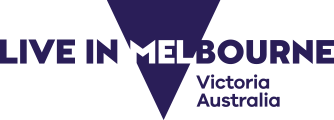"The most rewarding part is walking out of the hospital at the end of a shift, knowing the work we've done has made a difference to someone's life."
Dr Andrew Wang is a medical professional with a skilled migrant visa working at Sunshine Hospital in Melbourne’s West.
Originally from Taipei City in Taiwan, Dr Andrew Wang arrived in Melbourne in 2014 to pursue his dream of studying medicine at the University of Melbourne, being “particularly drawn to the city by its world-renowned reputation in medical education and research.”
Since then, the 29-year-old doctor has been granted a skilled migrant visa and has made a new life here with his partner, Hong Kong-born Tsz Yan Charis Kho, a physician trainee at Western Health.
The last year was a particularly busy time for Andrew, as from early 2020 he worked at the Sunshine Hospital COVID-19 clinic. Initially, he was screening individuals, “returned travellers, mostly”, who presented with fever.
Then, during Victoria’s second pandemic wave, he joined the hospital’s team at the Melbourne Showgrounds testing site, collecting nose and throat specimens. “At its peak, we tested over 1000 Victorians a day,” he recalls.
Most recently, Dr Wang’s role shifted to reviewing inpatient test results to determine if it’s safe for the frontline clinical staff to “roll back” their PPE requirements. But it’s not time to relax yet. “It continues to be a highly dynamic role that rapidly adapts to potential outbreaks around and outside Australia,” he says.
“Given the pandemic's evolving nature, the team has to quickly adapt to new evidence and guidelines and implement changes promptly to ensure the utmost safety of staff and patients. For instance, new outbreaks can lead to a surge in testing and contact tracing.”
The toughest part of the job, Andrew believes, is helping patients manage their mental health.
There are upsides to the role, though.
“The most rewarding part is walking out of the hospital at the end of a shift, knowing the work we've done has made a difference to someone's life – this applies to patients, their family, and colleagues,” Andrew notes. “As doctors, it's also humbling and fulfilling to work in a multi-disciplinary manner in and outside the hospitals: there’s countless clinical and non-clinical staff working together to provide care to Victoria.”
Teaching often punctuates Andrew’s work day too, advising other clinicians how to use lung ultrasounds to help direct the management of COVID-19 and other similar medical conditions.
“Lung ultrasound is a safe, valuable tool for doctors to assess patients in real time,” he explains. “It allows us to better discern a patient at risk of further deterioration requiring inpatient monitoring from a patient who may return home to recover.”
When he found his skilled migrant visa had been granted, Andrew and his partner, Charis, were thrilled.
“It was great news, we were glad to know that the state government acknowledged our contribution to the Victorian community and thankful at the same time for the opportunities offered to us. I shared the news with our friends, family, and mentors who helped us make Australia home along the way.”
In particular, Andrew says the visa will enable him to map out a secure future. “Most immediately, it means Charis and I don’t need to worry about renewing our temporary visas for work and study purposes. The Victorian Government has given us the certainty we need to plan our future together.”
And in ten years’ time?
“We’d love to continue working in Victoria to serve the community we’ve come to love. Having undertaken our medical training in Victoria means we’re most familiar with Victoria's tremendous support system and services. As we progress through our careers, we’ll continue to gain invaluable clinical experience and learn people's extraordinary stories.”
This story originally appeared on The Victorian Connection.
